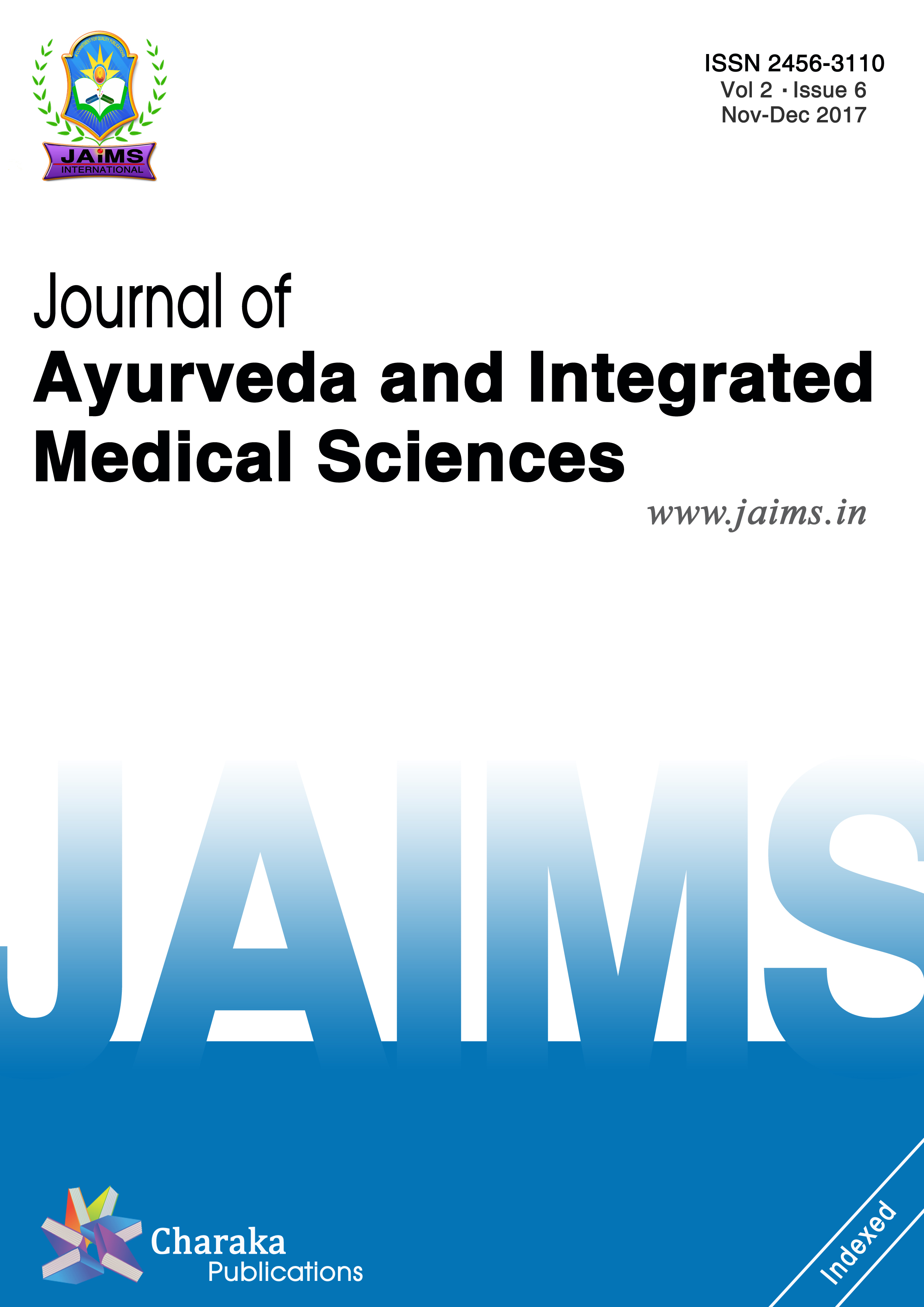Identity parameters on traditionally used Antiurolithiatic Herb - Scoparia Dulcis Linn.
DOI:
https://doi.org/10.21760/jaims.v2i06.343Keywords:
Scoparia dulcis, Quality standards, HPTLC, MonographAbstract
Introduction: Scoparia dulcis Linn. locally known as Manithumbe Gida belongs to Scophularaceae family and used in medicine by the traditional practitioners for the treatment of urinary calculi. Materials and Methods: Matured plants are collected from Udupi district and authenticated. Macromicroscopic features, physico-chemical standards, HPTLC and secondary metabolites were recorded as per standard guidelines. Result: TS of leaf has shown the presence of mesophyll and bi-collateral vascular bundles. Outer cork tissue, a layer of cortex and conjoint collateral closed vascular bundles and central pith are inclusions of stem TS. Pitted and reticulate vessels are characteristic features of plant powder. Physico-chemical standards and presence of alkaloids, carbohydrates, tannin and coumarins were indicative of its chemical nature. HPTLC fingerprints are a record of its different chemical constituents. Thus the quality monograph prepared on this drug beneficial in future research.
Downloads
References
Dintu Jose, Pharmacognostical and Experimental study on Arikal Tumbe- Anisochilus carnosus (L.f.) Wall. wsr to its Antifungal activity, MD Thesis, RGUHS Bangalore;2017.
Mallya Suma V, Comprehensive study of Plants in Surasaadi Gana wsr o their antibacterial activity (PhD thesis), Nashik, Mahrashtra: Maharashtra University of Health Sciences; 2016.
Anonymous 1972-1999, Wealth Of India, Council for Scientific And Industrial Research vol-9, Published by Publication and Information Directorate, New Delhi 1972, Pp 472, Page no: 260- 261
Kirtikar KR & Basu BD.Indian Mediicnal Plants, Volume III, Dehradun; International Book Distributors; 2008 p 2320
Bhat Gopalakrishna K., Flora Of Udupi, Published by Indian Naturalist, Udupi, Edition 2003, Pp 913, Page no: 422
Hooker J. D., Flora Of British India, Vol- 4, Published under The Authority Of The Secretary Of State For India in Council, Pp 780, Page no: 289
Khare CP. Indian Medicinal Plants, An illustrated dictionary. New Delhi; Springer;2007;p 592
Juliet et al. Authentication and Proximate analysis of Madhuka indica Gmell. A wild edible flowers used for traditional fermentation of Ayurvedic Biomedicines; J Ayu Med Sci 2016;1(1);12-18
Dintu et al. Pharmacognostical evaluation of an extrapharmacopoeial Drug of Ayurveda- Anisochilus carnosus(L.F.)Wall. J Ayu Med Sci 2017;2(2): p179-87
Mallya Suma V, Nesari Tanuja, Sunilkumar KN, Pharmacognostic standards of Katphala(Myrica nagi Hook.f.non-Thumb); A potent bark drug used in Indian system of medicine. Journal of Scientific and innovative Research 2016;5(4): p1-3
Quality control methods for medicinal plants. Geneva: World Health Organization; 1998; p25-8
Brain KR, Turner T, The practical evaluation of phytopharmaceuticals , Bristol; WrightScientechnia;1975; p. 10-12
Sethi PD, High Performance Thin Layer Chromatography, Ist edition, New delhi; CBS Publishers and Distributors; 1996; p1-56.
Mukharjee Pulok K. Quality Control of Herbal Drugs. New Delhi: Business Horizons;2002;p68
Joshi Devendra, Joshi Geeta. Quality Control &Standardization of Ayurvedic Medicines. Varanasi: Chaukamba Orientalia; 2011; p113















